If Juan Cruz’s ceviche could talk, it would tell a story of redemption and how his love of Baja-style seafood took him from a coyote to ceviche champion. Cruz is a 35-year-old marisquero who speaks with the rough tongue and swagger of a Mexican Goodfella if the Goodfellas were based in the California and Mexico border instead of Brooklyn. He’ll address you with the utmost respect and carries himself with the humbleness that’s earned after experiencing an unbridled youth.
As you walk up to El Jefe Baja Style's mariscos trailer parked somewhere in the San Bernandino area, three things will stand out. First, you might notice the 40 different bottles of hot sauces lined up out front. A Ceviche Rumble trophy in the window might catch your eye. But you might miss the large image of Juan Cruz inviting you to cross the U.S. and Mexico border through a barbed-wire fence he's pulling open with his foot and one hand.
At first, Cruz was shy about elaborating more on his young life. Not because he's ashamed, but out of respect for his mother. His mom has already had to deal with all his "bullshit and headaches" as he puts it since his father abandoned them when he was a boy. "She was both my mom and my dad." But in the end, Cruz agreed to share a bit of his story despite his mother's pressing concern; according to him, "Que va pensar la familia?" What's the family going to think? This is a common trope with old-school Latino parents.
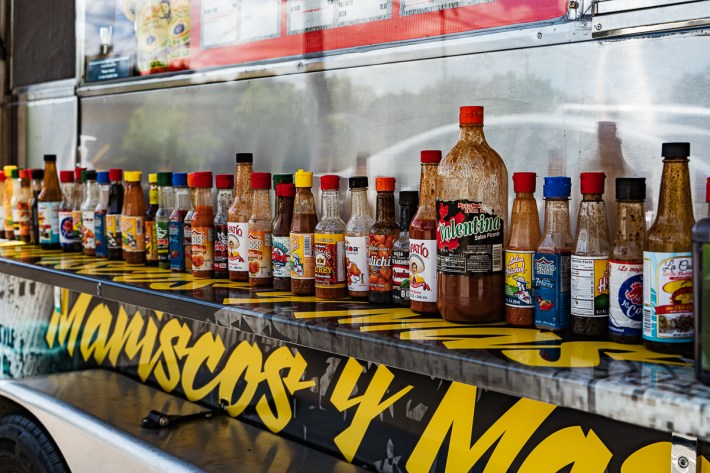

His story starts in Anaheim, where he was born. But preferring a culture and freedom better suited for his scrappy and troublesome young self, he moved to Tijuana at 16. While down there, he found work in things that "other people shouldn't be doing," as he puts it. But when work was slow, or "la merca" (the merch) didn't arrive, Cruz and his friends would drive down the coast and kill time in Baja's rich seafood scene. That's where Cruz found his affection for mariscos.
While his friends binged on beers and shrimp, Cruz would focus his eyes at the hands prying open oysters and preparing shrimp behind the counters. They frequented some of these marisquerías so often that they developed friendships with the owners, and one, in particular, noticed Cruz's watchful eye on his hands. This man was Don Jose, and this friendship would provide Cruz with a seed of new life and purpose that would sprout ten years later.
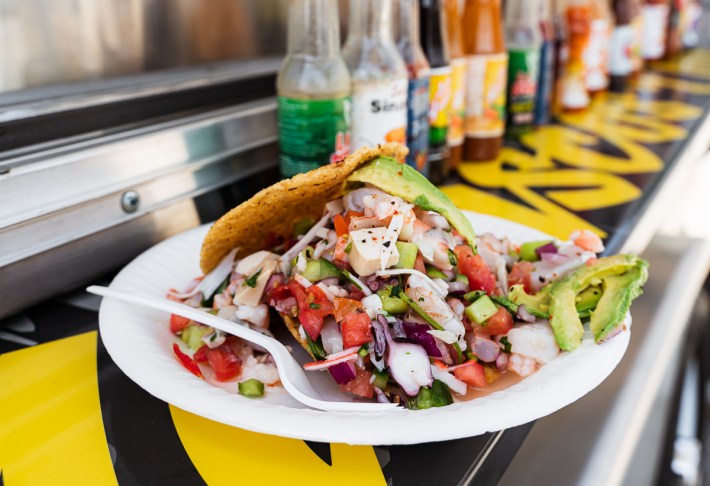
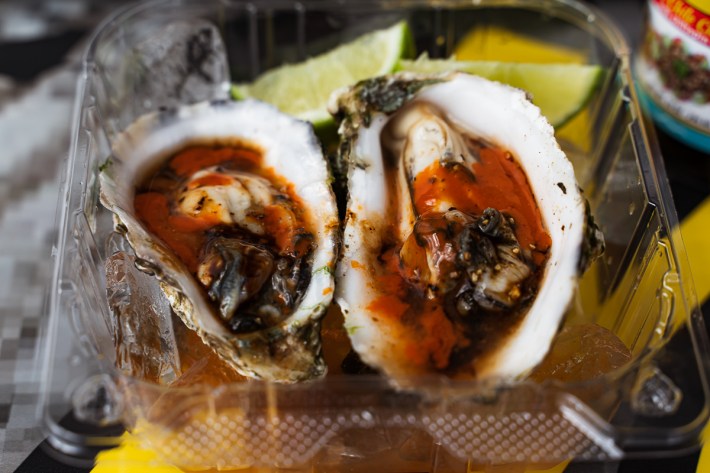
Cruz kept visiting Don Jose, who was an old fisherman who retired to work a small mariscos cart in Popotla, a small fishing town just south of Rosarito. He one day told Cruz to stop watching and just join him behind the counter. Cruz may not have known it then, but learning that Baja-style ceviche from Don Jose would lead to his eventual back-to-back championship run years later.
At 21, the law eventually caught up to Cruz, letting him go with probation and conspiracy charges. That's when he decided it was time to “leave the bad for the good.” He moved back to this side of the border and for the next 10 years, Cruz jumped around different jobs, including walking off his last job after a former employer joked about him and his coworkers being "wetbacks."
From there, the young hustler built a large following with a taco stand in the streets. The stand didn't have a name, but his clientele called him "Jefe," that’s how he got his nickname. The taco stand started seeing long lines, giving Cruz the confidence to open up a brick and mortar. But it proved to be a strategic mistake; the taco shop was located far from his original taco stand, his clientele didn't make the drive to find him.
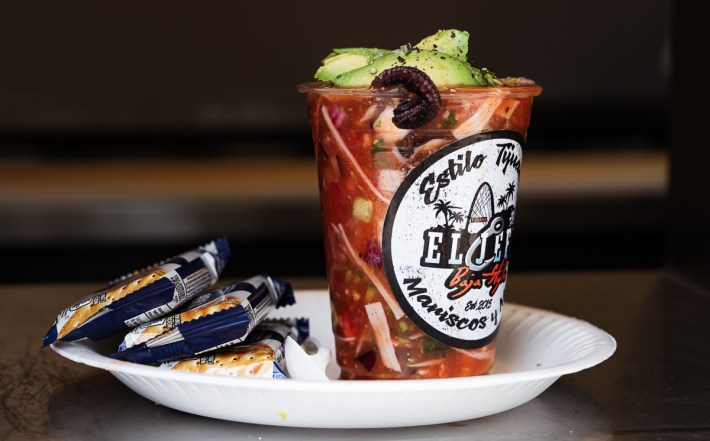
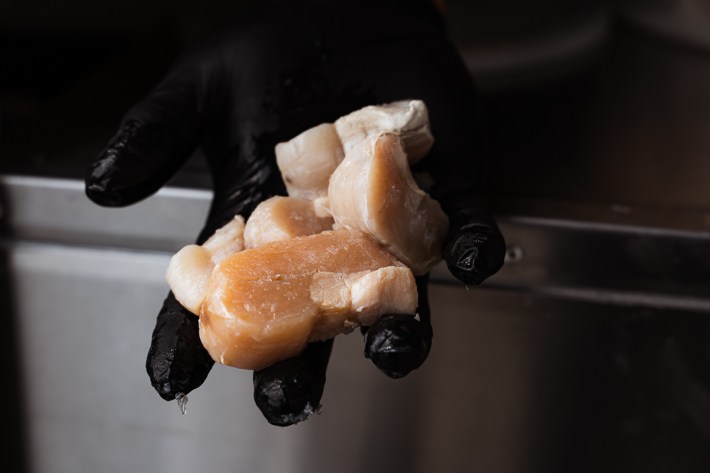
With the business failing and Cruz mad at the shitty mariscos he had been eating around town, he said, "fuck it, I need to show people what good mariscos look and taste like here." He took the last $74 in his wallet and went to the local grocery store to buy his seafood products. That was in 2018, and since then, Cruz has not looked back.
Cruz left the taquería and went back to the streets. This time to roam the Inland Empire with his ceviches and cocteles. He eventually bought his trailer and found himself in Ceviche Rumble, a short-lived annual event where over a dozen marisqueros competed from Southern California. El Jefe Baja Style won the competition twice, back to back in 2019 and virtually in 2020 when the pandemic canceled all events.
As he prepares his dishes, you’ll catch his attention to detail and technique as he speaks about his past. He’ll drop little tidbits about his technique and approach with each step. As he grinds pepper over the freshly butterflied and cleaned shrimp, he'll comment, "fresh pepper, pepper should always be ground fresh." He uses lime juice to cure the fish while preparing other ingredients and cures the shrimp last to avoid the lime overpowering the flavor.
For most Mexicans, as Cruz points out, it's all about the shrimp, "always shrimp” he says. But for him, he's all about the fish, comparing it to Japanese sushi. Except, instead of serving hamachi or bluefin tuna nigiri, he pulls out a sizable fresh filet of Swai fish (a farmed sweetwater fish from Vietnam that is among the easiest and cost-effective fish to source in Southern California) and cuts it into large pieces, "gotta have them big enough to enjoy the texture," he'll tell you. Every bit of his mariscos preparation has a purpose and an intention, and it translates through the great plate of mariscos he prepares. He strikes a balance to taste the product without losing it in added flavors. He's championed his craft and has the trophy to prove it.
It’s worth a good mariscos hunt if you’re into championship meals. Long drives can sometimes feel like you're chasing a rainbow you’ll never catch, but I promise you that at the end of this rainbow there's a trailer full of expertly prepared mariscos worth chasing.
You can find his account on Instagram to keep track of his next location.
El Jefe Baja Style: @eljefebajastyle.







